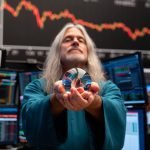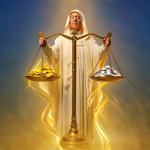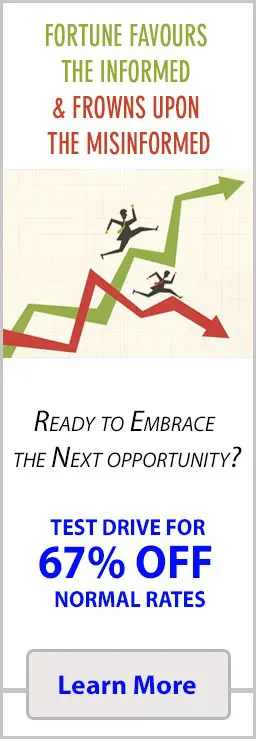
What Is Independent Thinking and Why It Matters in a Conformist World
“The crowd has never been right at turning points that matter.” Financial history delivers this verdict repeatedly, yet most people continue surrendering their judgment to collective delusion. When markets spiral into panic, rational analysis evaporates—replaced by a contagious fear that transforms intelligent individuals into a mindless herd stampeding toward financial self-destruction. This psychological cascade isn’t just financially ruinous—it’s the perfect illustration of why independent thinking has become our most valuable yet scarce resource.
What is independent thinking if not the capacity to maintain rational analysis when everyone around you succumbs to emotional contagion? The financial markets provide the perfect laboratory for understanding this critical mental discipline, with clear scorekeeping that punishes conformity and rewards intellectual autonomy at crucial inflection points.
The Devastating Cost of Cognitive Surrender
Consider the market collapse of March 2020. As COVID-19 fears triggered unprecedented selling pressure, the S&P 500 plummeted 34% in just 23 trading days. Media outlets amplified apocalyptic narratives. Investment forums overflowed with existential dread. Retail investors liquidated retirement accounts at the precise moment they should have been deploying capital.
What is independent thinking worth in such moments? For those who maintained it, approximately 100% returns within a year. While the masses panic-sold into the collapse, contrarian investors like Bill Ackman pivoted from short positions to aggressive buying near the bottom, capturing historic returns when markets recovered. This wasn’t luck or timing—it was the application of independent analysis when conventional wisdom had surrendered to fear.
The financial consequences of cognitive conformity extend beyond dramatic crashes. During the 1990s tech bubble, professional fund managers who questioned the mania of paying infinite multiples for unprofitable businesses faced overwhelming pressure. Many capitulated to client demands for tech exposure just before the crash, abandoning independent judgment precisely when it would have preserved fortunes.
The Psychological Architecture of Independent Thought
What is independent thinking in its essential structure? It’s not contrarianism for its own sake, but rather a disciplined thought process that subjects both mainstream narratives and one’s own assumptions to rigorous scrutiny. This cognitive architecture has several crucial components:
First-Principles Analysis: Independent thinkers deconstruct complex situations into fundamental elements rather than accepting packaged narratives. When evaluating market conditions, they examine actual cash flows, balance sheet strength, and intrinsic value rather than relying on market sentiment or popular commentary.
Intellectual Sovereignty: The capacity to hold views not validated by social consensus. When Charlie Munger maintained positions in Chinese technology stocks despite overwhelming negative sentiment, he demonstrated this sovereignty—focusing on business fundamentals rather than geopolitical narratives dominating financial media.
Calibrated Skepticism: Independent thinking requires questioning not just others’ conclusions but the framework generating those conclusions. During the housing bubble, analyst Michael Burry recognized that risk models used by rating agencies contained fundamental statistical errors that created systematic mispricing—an insight that led to one of history’s most profitable contrarian positions.
The Evolutionary Challenge: Why Independent Thinking Feels Unnatural
Our biological wiring actively resists independent thinking. For 99% of human evolutionary history, social conformity enhanced survival chances while intellectual deviation risked exile—a virtual death sentence in tribal environments. This created powerful neural circuitry that rewards conformity with dopamine and punishes social divergence with cortisol and anxiety.
Modern financial markets exploit this ancient programming. When everyone around you panic-sells, contradicting group behavior triggers genuine physiological distress. Your brain literally releases stress hormones when you maintain positions others are abandoning—a biological tax on independent thinking that few can withstand.
What is independent thinking worth in an evolutionary context? Potentially everything. While our biology rewards short-term conformity, modern complexity demands cognitive autonomy. The ability to override conformity circuits represents the crucial adaptation separating financial survivors from victims when markets detach from reality.
Seth Klarman, founder of Baupost Group, demonstrates this capacity by maintaining massive cash positions during asset bubbles despite intense pressure to deploy capital. This biological override—tolerating the pain of watching others profit during manias—has preserved billions during subsequent crashes when conformity proved catastrophic.
Strategic Applications: Weaponizing Independent Analysis
Understanding what is independent thinking conceptually differs from applying it strategically. The most successful practitioners employ specific frameworks that transform cognitive autonomy into decisive action:
1. Inverted Analysis
While conventional investors ask “What’s working now?”, independent thinkers invert the question to ask “What’s irrationally abandoned?” During market panics, entire sectors often trade at historic discounts despite intact fundamentals. In March 2020, quality travel companies traded at 70-80% discounts despite strong balance sheets and inevitable recovery prospects.
This inverted approach—systematically examining what others reflexively reject—creates asymmetric opportunities where limited downside meets explosive upside potential.
2. Strategic Contrarianism Through Options
Market fear monetizes directly through options pricing. When collective panic spikes, put option premiums inflate dramatically, creating opportunities for those with independent judgment to capture fear premium through strategic option selling.
During extreme volatility, selling put options on fundamentally sound companies at prices representing absurd worst-case scenarios generates extraordinary premium income. These premiums can then fund call options or LEAPS (Long-Term Equity Anticipation Securities) on the same securities, creating asymmetric upside exposure with limited risk.
3. Temporal Arbitrage
Perhaps the most powerful application of independent thinking exploits the growing disconnect between market time horizons and fundamental business reality. As algorithmic trading and institutional pressure shorten investor time frames, extraordinary opportunities emerge for those willing to analyze beyond quarterly results.
What is independent thinking if not the ability to maintain longer time horizons when markets have surrendered to short-termism? Amazon’s stock declined over 90% during the dot-com crash, yet the business model remained intact. Investors who independently analyzed the fundamental trajectory rather than reacting to market sentiment captured 100,000%+ returns over subsequent decades.
The Conformity Tax: Measuring the Cost of Cognitive Surrender
Financial markets provide a rare domain where the precise cost of conformity can be quantified. DALBAR’s Quantitative Analysis of Investor Behavior study reveals this “conformity tax” with mathematical precision: the average equity fund investor has underperformed the S&P 500 by approximately 4.5% annually over 20-year periods.
This performance gap—which compounds to differences of hundreds of percentage points over investment lifetimes—stems primarily from behavior errors at market extremes. Investors buy enthusiastically after extended rallies and sell desperately after declines—the precise opposite of what independent analysis would dictate.
What is independent thinking worth quantitatively? If a disciplined investor simply matches market returns instead of surrendering to behavioral errors, their terminal wealth could exceed the average investor’s by 2-3 times over typical investment horizons. This represents the minimum premium for cognitive autonomy, without even considering the additional returns from contrarian positioning during market extremes.
Cultivating the Independent Mind: From Theory to Practice
Independent thinking isn’t an innate trait but a cultivated discipline. The most successful practitioners develop specific habits that systematically overcome conformity bias:
1. Information Diet Optimization
Warren Buffett famously operates from Omaha rather than Wall Street, specifically to maintain cognitive independence from consensus thinking. This physical separation mirrors the necessary informational separation required for independent thought.
Practical application requires curating information sources that provide factual reporting while minimizing narrative overlay. Independent thinkers prioritize primary sources—earnings reports, economic data, and direct industry observation—over interpreted content designed to generate emotional engagement.
2. Decision Journals and Pre-Commitment Protocols
What is independent thinking if not the ability to maintain consistent analysis when emotions would dictate otherwise? Decision journals—written records of investment theses made before market movements—create accountability to your reasoning rather than results.
More powerfully, pre-commitment protocols establish specific action rules during calm periods to be executed during volatility. These might include: “If stock X drops below Y price with no fundamental deterioration, deploy Z% of reserves.” Such mechanisms bind your future self to your current rational analysis, preventing emotional override when conformity pressure peaks.
3. Intellectual Stress Testing
Ray Dalio’s approach at Bridgewater Associates institutionalizes independent thinking through deliberate stress-testing of ideas. By assigning team members to advocate opposing positions and critique existing views, this process systematically identifies blind spots and assumption errors.
Individual investors can replicate this by deliberately seeking the strongest possible arguments against their positions—not to achieve artificial balance, but to identify genuine vulnerabilities in their thinking that conformity would obscure.
The Paradoxical Power of Independent Thinking
The ultimate paradox of independent thinking emerges from its relationship to conviction. True intellectual autonomy doesn’t produce unwavering certainty—it generates calibrated confidence that adjusts proportionally to evidence quality. The most powerful independent thinkers maintain both strong views and the willingness to revise them when facts change.
What is independent thinking in its mature form? The capacity to maintain position sizing proportional to conviction, scaling exposure when analysis suggests heightened opportunity while reducing risk when genuine uncertainty increases. This calibrated approach differs dramatically from both blind contrarianism and rigid dogmatism that masquerade as independent thought.
George Soros exemplifies this paradoxical strength through his concept of reflexivity—maintaining conviction in analysis while recognizing that markets themselves alter fundamental reality through feedback loops. This sophisticated understanding allowed him to build aggressive positions against the British pound in 1992 based on independent analysis while remaining attentive to how market movements themselves changed the underlying dynamics.
In a world increasingly dominated by algorithmic trading, passive indexing, and social media-amplified narratives, what is independent thinking if not the ultimate sustainable advantage? While technology commoditizes information and execution, the capacity for sovereign analysis amid collective delusion remains irreplaceable—the last uncrowded trade in increasingly efficient markets.
The path isn’t easy. Standing apart from consensus requires tolerating both social isolation and the biological discomfort of uncertainty. Yet for those who develop this capacity, the rewards extend beyond financial returns to a fundamentally different relationship with reality—seeing clearly what others perceive through the distorting lens of collective emotion.
In markets and in life, the crowd will continue to be wrong at precisely the moments that matter most. Independent thinking remains the price of admission to opportunities hidden in plain sight—visible only to those who’ve developed the capacity to see with their own eyes rather than borrowing the vision of others.










